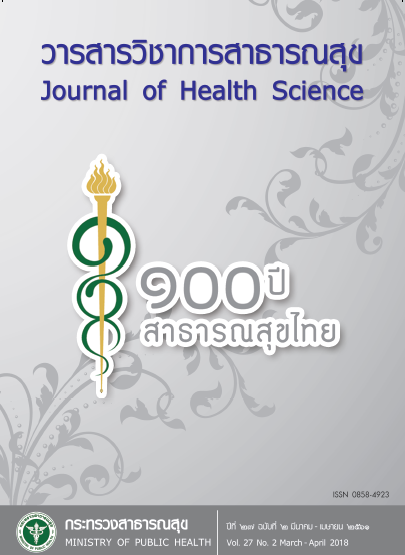Model Development for Prevention and Solving Teenage Pregnancy in Suphanburi Province
Keywords:
model development, teenage pregnancyAbstract
The objectives of this study were to analyze operations to solve the teenage pregnancy problems and develop a model for the prevention and alleviation of teenage pregnancy in Suphanburi province. The implementations were divided into 4 phases: (1) baseline data analysis; (2) design and model development, (3) implementation, and (4) evaluation of the effectiveness of the model. Descriptive statistics and content analysis were used for data analysis. The results of this study showed that the problems of teenage pregnancy in Suphanburi province had upward trend from 2004 to 2010. Operational problems included inadequate serviced, inability to respond to the demand of teenage, and non-coordination between public health agencies and other agencies. The WHO health system model was applied to become a participatory model which consisted of 6 management areas: service delivery, health work force, health information systems, access to essential services, health financing, and leadership and governance. The operational structure of this model was composed of core groups and co-operators. As a result, the developed model was found to reduce the magnitude of teenage pregnancy, increase workers satisfaction, improve effectiveness of teenage care system and enhance coordination between public health and other responsible agencies. Recommendations from this study include the need for multisectoral participation and encouragement of public sector and young people in the program in order to increase effectiveness of the prevention and management of teenage pregnancy problems.
Downloads
Downloads
Published
How to Cite
Issue
Section
License
Copyright (c) 2018 Journal of Health Science- วารสารวิชาการสาธารณสุข

This work is licensed under a Creative Commons Attribution-NonCommercial-NoDerivatives 4.0 International License.







